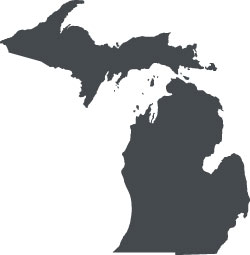
Michigan is working to reach its 2025 goal of 40% reduction in both total phosphorus and soluble reactive phosphorus loss, which fuels algae growth in the lake. The state’s three focus areas include:
• Reducing loads from specific outlets and general runoff areas (point and non-point sources)
• Wetland restoration, green stormwater infrastructure, and other land conservation practices in both the rural and urban areas
• Engagement with partners and the public
The plan’s framework will evaluate the outcomes of actions taken to reduce phosphorous and develop and implement research projects to address gaps and uncertainties in existing phosphorus reduction methods and technologies. The plan also supports watershed management planning, with an emphasis on completing agricultural inventories.
The Michigan Departments of Environment, Great Lakes, and Energy (EGLE) and Agriculture and Rural Development (MDARD) are focusing these agricultural inventories in high-priority sub-basins. The agricultural inventory process will collect data to locate and prioritize sites with the potential to address nutrient runoff and positively affect water quality. The plan also focuses on a pilot wetland restoration effort to reduce phosphorous runoff to Lake Erie. MDARD and EGLE are encouraging farmers to participate in the Michigan Agriculture Environmental Assurance Program (MAEAP) to help reduce nutrient loss from their fields.
This article appeared in the May 2022 issue of Journal of Nutrient Management on page 5. Not a subscriber? Click to get the print magazine.










